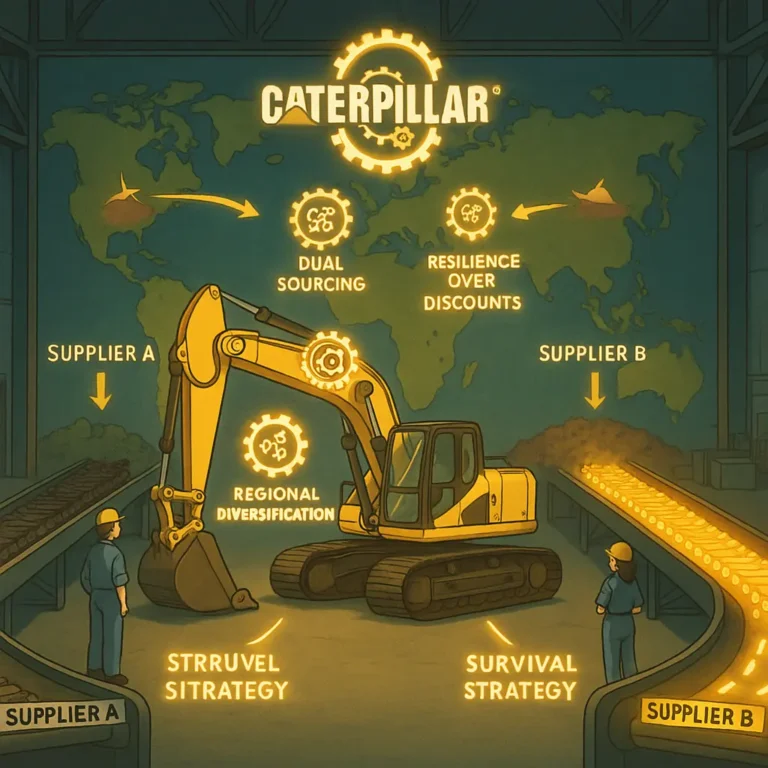
BMW’s wire harness supply crisis
BMW’s wire harness supply bottleneck, a direct result of Russia’s invasion of Ukraine, dealt a significant blow to the company’s supply chain. Production lines halted, costs rose dramatically, and schedules were missed.
All from one part that people often overlook.
Key Nuggets
- BMW had to stop production when wire harness suppliers in Ukraine paused work during the invasion.
- The cable harness is a custom-made bundle of wires, which makes replacement tricky.
- BMW had to shift sourcing to other regions and adjust plant schedules to keep producing cars.
- The event taught the industry to map deeper supplier layers, hold backup supply options, and build flexible logistics plans.
- African supply chains can apply the same lessons by building broader supplier networks and planning for potential disruptions.
Background Story Behind BMW’s Wire Harness Supply Bottleneck
Think of a wire harness as the nervous system of a car. If even one part of that system is missing, the whole body stops moving. That was what happened to BMW when suppliers in Ukraine had to pause the supply of cable harness during the early stages of the invasion.
Before Ukraine’s invasion, the country was a major production hub for wiring harnesses. Companies such as Leoni and Yazaki had established plants, investing over $600 million and employing 60,000 people, due to the availability of trained labor, skilled assembly work, and proximity to European car plants.
BMW sourced many of its wire harnesses from these factories, which were spread across western Ukraine.
Wire harnesses are hand-made. And each vehicle or model has its own version. However, these parts are not generic, so you cannot swap in another harness without redesigning the entire car.
That was why when factories in Ukraine paused their operations, the flow of these wire harnesses ceased almost immediately, and the impact was the same. Immediate.
But it wasn’t just BMW’s supply chain that was affected. The company’s German neighbors, such as the Volkswagen Group (Porsche, Audi, VW, etc.) and other luxury brands, were also impacted.
The bottleneck hit BMW plants that relied on just‑in‑time supply. Trucks typically carry cable harnesses from Ukraine into Europe on a fixed schedule, so when routes became unsafe and staff were unable to work, these deliveries were disrupted.
Read More: How Samsung’s Poor Quality Control Led to the Galaxy Note7 Crisis.
How BMW’s Supply Chain Approached The Wire Harness Supply Bottleneck
In March 2022, Maximilian Schöberl, BMW’s head of corporate affairs, told investors that “we will have to face production interruptions and supply disruptions for important components” as a result of the Ukraine conflict.
The company quickly entered what executives later called “intensive discussions” with wire harness suppliers.
Some potential suppliers already had factories in Eastern Europe (Romania, Serbia, etc) and North Africa. However, the challenge for BMW was to scale up these plants as quickly as possible.
New staff had to be trained, and new tooling had to be installed. Both of these processes take time due to the custom nature of assembling a wire harness.
During the adjustment period, BMW slowed or paused shifts. MINI’s Oxford plant stopped production for a short window. And plants in Germany and the Netherlands adjusted their production schedules and output.
BMW worked to restart lines step by step as substitute supply came online.
By late 2022, these sourcing changes started to show progress. BMW reported stronger output in the final quarter of the same year as the flow of wire harness stabilized again.
Read More: How Chip Shortage Crippled Sony’s PS5 Supply Chain.
The Impact of BMW’s Wire Harness Supply Bottleneck
The most significant impact of the wire harness shortage was a reduction in vehicle manufacturing and output. Some plants were paused, while others ran fewer shifts, and delivery schedules were adjusted.
BMW’s Inventory planning had to be revised.
Finance chief Nicolas Peter warned that raw-material price swings and supply shortages (including harnesses) would likely cut into margins by “hundreds of millions of euros.”
Although the company did not disclose the exact volume lost, industry groups noted that European automakers were losing thousands of vehicles per week during the early stages of the war due to harness shortages alone.
This wasn’t just a long-term collapse. It was a sharp shock. However, it demonstrated how one supplier region can impact an entire production network.
Do you want more supply chain stories like this? Subscribe here
Lessons From the BMW’s Wire Harness Supply Bottleneck
Like many crises, the BMW’s wire harness supply bottlenecks disrupted the company’s supply chain. However, there are key lessons to be learned from how BMW navigated the entire situation.
1. Wider Supplier Base Reduces Risk
One key lesson from BMW’s wiring loom shortage is the importance of supplier diversity. The complex nature of global supply chains will struggle without it. Relying on a single region, even one with a strong workforce and high output, can expose production lines to sudden shocks.
When one region becomes unavailable, having a second or third source in place makes it possible to shift orders more smoothly.
2. Some Inventory Is Not Waste
The automotive industry has long advocated for lean inventory management. And for the longest time, it had worked for them. But this shortage showed that the flow of lean parts can break down when the world shifts overnight.
Holding a small backup stock of custom components, such as wiring harnesses, can help protect against output issues. Inventory does not need to be large, but it must be strategic and focused on parts that cannot be easily replaced.
3. Know Your Suppliers Beyond the First Layer
Many car companies focus on their direct suppliers.
But in this case, the BMW’s wire harnesses were sourced from suppliers who, in turn, rely on other suppliers for their components. When the war began, the automaker, along with many others, realized how little they knew about those second and third layers of the supply chain.
Better mapping of these deeper supplier relationships helps companies anticipate where a shock that could directly impact supply might appear.
4. Make Supply Chain Planning a Board-Level Topic
When the supply of wire harness was disrupted, BMW’s logistics leadership worked closely with top executives. Decisions about plant schedules, sourcing reallocation, transport routing, and staffing needed a fast agreement.
The crisis shifted supply decisions from the background to senior planning spaces. Many manufacturers are now reorganizing their supply functions to enable faster responses when conditions shift.
Read More: The Story Behind Apple’s Manufacturing Shift Away From China.
How African Supply Chains Can Apply These Lessons
African supply chains face their own disruptions.
Ports can become congested, borders can close, and currency fluctuations can impact sourcing. The lessons from BMW’s wiring loom shortages are directly applicable. Here is how:
1. Build More Than One Supplier Relationship
Even when a supplier is reliable, it is safer to have alternatives. Doing this does not require frequent switching of suppliers. It simply means staying connected to more than one source, so you can ensure that movements are possible when needed.
For example, a packaging manufacturer using one provider for resin pellets can form trial agreements with a second supplier in another region. If the first supplier faces a plant fire or trade restriction, switching becomes faster.
2. Hold Targeted Backup Stock
Not every part needs deep storage. The parts that matter are:
- Custom-made items
- Parts made in limited regions
- Parts involving specialized labor
- Imported items with long lead times
Holding a short-term buffer of these parts can protect companies from unexpected stops.
3. Map Suppliers Beyond the Direct Contract
A distributor may supply your warehouse. But where do they source from? And where does their source get inputs? Knowing these layers helps African supply leaders spot weak areas early.
The good news is that this does not require complex software. A simple spreadsheet with supplier tiers, plant locations, and transportation routes can help identify potential areas of disruption.
4. Logistics Flexibility Matters More Than Cost Alone
Transport routes can shift quickly. Companies that rely on a single port or trucking lane may find themselves at a disadvantage when that route is blocked. African businesses can plan alternative ports or cross-border corridors before they are needed.
The lesson is not to chase the lowest price every time. The lesson is to ask: If this link broke, what would stop?
Do you want more supply chain stories like this? Subscribe here

Obinabo Tochukwu Tabansi is a supply chain digital writer (Content writer & Ghostwriter) helping professionals and business owners across Africa learn from real-world supply chain wins and setbacks and apply proven strategies to their own operations. He also crafts social content for logistics and supply chain companies, turning their solutions and insights into engaging posts that drive visibility and trust.








